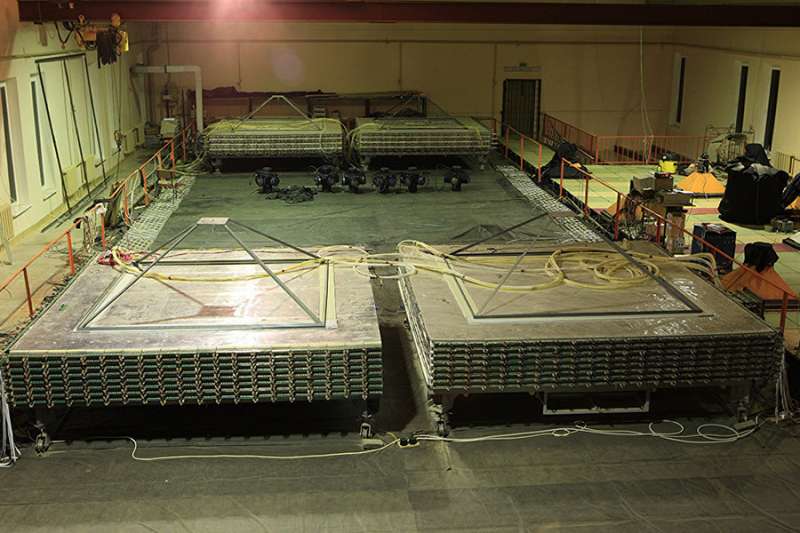Credit: National Research Nuclear University
Turbulence in clear skies comprises the most unpleasant kind of vortex drifts in air travel. These occur in cloudless space with perfect visibility when an airplane travels between air flows that differ in direction, speed of movement, temperature and density. This is the kind of turbulence that Aeroflot flight SU-270 from Moscow to Bangkok experienced, resulting in 27 injuries of varying severity.
Such turbulence is impossible to detect in advance, and experts believe early warning for pilots could mitigate injuries to travelers and flight crews. Scientists are developing techniques for distant detection of turbulence in clear skies. Russian physicists from the National Research Nuclear University MEPhI suggest using a "muon hodoscope," which traces muon trajectories in the atmosphere for detection of zones of possible turbulence. Muons are elementary particles that result from interaction of space articles (protons and nuclei) with Earth's atmosphere. As they pass through the atmosphere, muons lose energy, and their flow changes. The quantity of lost energy depends on characteristics of the atmosphere. Electromagnetic fields, temperature, air rarity and water vapor content all influence muon energy. It is possible to trace, describe, and predict atmosphere processes by the character of changes in muon flow.
Professor Igor Yashin says, "The hodoscope records changes of each muon, producing a picture of the atmosphere that is similar to X-ray imaging. Currently, we have a working stationary hodoscope called HURRICANE, and a mobile version of the detector." The device is portable, and powered by a small electronic generator or a domestic socket.
"The main question for us is the device calibration at real events," Igor Yashin explains. "We can trace any processes in the atmosphere where there are large-scale changes of the density gradient. The incident above Thailand involved a reported 700-meter 'air pocket,' which means that in this zone, there was very high air rarity—we would definitely see it with the help of a hodoscope. Using muon diagnostics, we can see the atmosphere in real-time, and predict the development of powerful atmospheric phenomena at heights of up to 15 km. It is only necessary to create a network of similar devices."
Provided by National Research Nuclear University
























